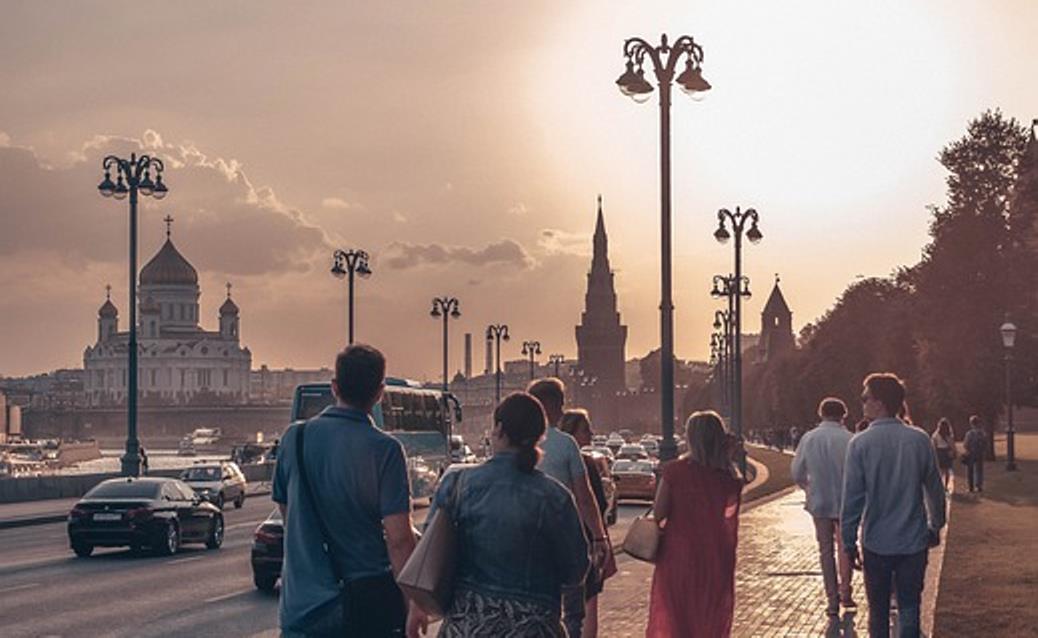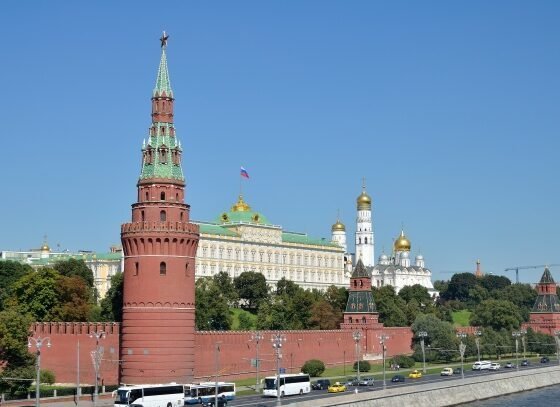(PONARS Eurasia Policy Memo) As the COVID-19 pandemic struck Russia in late March 2020 and state responses looked weak and indecisive, civil society did not hesitate to step in. For example, almost 200 million rubles ($2.8 million) was raised by the NGO union Chto delat’ (“What is to be done?”) to help medical workers, and organizations like Razvitie migratsii (“Migrant Development”) provided essential aid to labor migrants. Such efforts set a tone of national selflessness, prompting analysts to contend that civil society organizations filled the void created by the failures of Russia’s autocratic regime. As it was, the state did come to recognize the power of civil society groups in countering the pandemic. In many regions, such as Perm, Samara, and Leningrad, COVID-19 emergency teams included representatives from the third sector—charity, volunteer, and NGO fields—often those related to healthcare.
In this policy memo, we argue that Russia’s preparedness for emergency situations stems from several decades of organizational development and accumulation of knowledge and expertise in the field. Previous crises have contributed to organizational resilience—a set of attitudes and techniques that help mitigate the impact of systemic shocks. Nonetheless, we also see growing attempts by the state to divide civil society through selective funding, co-optation, and labeling. Such re-occurring actions threaten to undermine the sources of resilience and, eventually, the autonomy of the field.
Russian Civil Society Organizations Amidst COVID-19
COVID-19 hit Russia later than the United States and Europe, yet the country’s tally of infected quickly climbed in late March. The government responded with swift measures: closing the borders, restricting movement within the country, and imposing quarantine-like restrictions that varied from one region to another.
For civil society organizations, these measures meant the disruption of their operations and unclear prospects for survival. In parallel to the pandemic, the economy was hit by plummeting oil prices; consequently, worries about financial sustainability spread throughout. Large institutional donors like the foundations run by Vladimir Potanin and Gennady Timchenko pledged to allocate additional funding. Others like Mitya Aleshkovskiy’s Nuzhna Pomosch (“Need Help”) organized fundraising and promotional campaigns. Individual donations remained at pre-pandemic levels—between 700 and 750 rubles on average—according to the Benchmarking NGOs project (see Figure 1).
Figure 1. Donations (2019-2020) (www.tochno.st)
Key: monthly average donations total (black); to social help (yellow); to education, science, and culture (orange); to human rights (blue); to medicine (red); to the environment (green)
From the state, the Public Chamber and All-Russian People’s Front proposed a number of measures in support of civil society organizations in late March that included tax breaks, grace periods for rent and insurance payments, extension or postponement of regular inspections, and remote management procedures. Several coalitions petitioned the government with similar ideas. The government responded positively: on April 1, during a meeting with President Vladimir Putin, Prime Minister Mikhail Mishustin announced a moratorium on inspections for socially oriented NGOs, or SONGOs[1], alongside subsidies and tax breaks. Ex-premier Dmitry Medvedev, in his capacity as chair of United Russia, held an online meeting with representatives of the third sector on April 21 and supported the relief package for SONGOs. The process culminated at a meeting between Putin and activists of My vmeste (“We’re together”) on April 20. Among other aspects, the president proposed preferential loans for SONGOs to sustain wages, additional benefits and payments for COVID-related work, and tax deductions for private companies donating money or goods to groups. On top of this, Putin pledged 3 billion rubles in presidential grants in addition to the 4.6 billion already earmarked for the first half of the year.
Apart from funding, civil society organizations faced the challenge of remote work. As many organizations concentrated their efforts on helping the most vulnerable categories (homeless, migrants, elderly, and drug addicts), the restrictions on physical movement disrupted their traditional means of service delivery. Nevertheless, according to a survey of 232 civil society organizations from 48 regions conducted by KAF in late March 2020, three quarters of the organizations reported that they did not scale down their operations, with only 7 percent stating that they could no longer work. In a later poll (May/June), 49 percent of the organizations reported that they had launched new programs and projects. These surveys also indicated the adaptability of civil society organizations to a changing environment. For 48 percent of the respondents in the March survey, the pandemic presented an opportunity to invest in strategic and organizational development. Others indicated that they would like to allocate resources to online fundraising, learn more about constituencies, reduce costs, and raise efficiency. On the flip side, 23 percent saw no advantages in the current situation.
Sources of Civil Society Resilience
This is not the first crisis that Russian civil society has faced during the presidency of Putin. The legislative changes in 2006 coupled with the global economic crisis in 2008-09, decimated the number of non-governmental organizations in Russia. It forced some major foreign donors to leave the country and introduced more stringent rules of financial reporting and operations. Despite the growing pressure from the state and economic strains, the sector rebounded in the early 2010s with numerous initiatives and organizations emerging before and after the 2011-12 “For Fair Elections!” campaign. Likewise, the strength of civil society as a “rapid response system” to natural disasters was proven during the fight against wildfires in the summer of 2010. Likewise, during the flood in Krymsk in Krasnodar in the spring of 2012, the volunteers and NGOs were the first to provide aid and relief operations.
The regime reacted to the growing civic capacity in 2011-12 by adopting a “foreign agents law” in 2012 as well a law on “undesirable organizations” in 2015. Among other goals, these measures were aimed at de-linking the nascent coordination between non-political civic groups and the political opposition. The vague definition of “political activity” allowed the regime to target not only its obvious critics—electoral watchdogs, human rights and environmental NGOs—but the whole third sector since a large share of the field relied on foreign funding. Any public interview or meeting with public officials could now be counted as “political influence.” Though the number of the organizations on the list of “foreign agents” never exceeded 160 (70 as of April 2020), the threat of being included in the registry forced the sector to revise their international sources of funding. Moreover, in many cases, the law targeted the most influential and advanced organizations such as Obshchestvennyi verdikt (“Public Verdict”) and Memorial, which spread fears further.
Simultaneously, the regime increased its financial aid to the sector. Through presidential grants and governmental subsidies (federal and regional), the regime allocated substantial funds for SONGOs that deal with acute social problems like homelessness, drug and alcohol addicts, migrants, disaster relief, and so forth. The annual amount of funds disbursed via all programs rose from 4.8 billion rubles in 2012 to 12.2 billion in 2018. The Ministry of Economic Development—the major operator of the governmental subsidies for SONGOs—reported in 2019 that 3,804 organizations received financial help from the state and their services were delivered to more than 60 million Russians.
In short, the experience of operating in an environment where resource flows are unstable and access to them are heavily regulated by the state constantly pushed civil society organizations in Russia toward innovation. Three sources of resilience stand apart: the diversity of organizational forms and resource flows, and the density of communication within the sector. As our earlier study of organizational responses to the “foreign agents” law indicates, the opportunity to choose between different organizational forms is important in dealing with environmental challenges. For example, to avoid labeling and prosecution, some organizations preferred to continue their activity as an informal group. This “stay under the radar” strategy is also important for many civic initiatives that do not want to deal with cumbersome state regulations. Alternatively, the expansion of operations pushed initially informal groups toward legal incorporation.
Likewise, the diversity of resource flows contributed to the development of specific organizational skills and operational procedures. Different funds come with different conditionalities, and civil society groups recognized that with money comes responsibility. Those working with public funds admitted that stringent spending and reporting rules forced them to enhance their standard operating procedures in order to comply. Finally, public fundraising campaigns and management of volunteer networks required the acquisition of specific organizational skills. Here, an important role has been taken on by resource centers and information hubs, such as those run by the GRANI-Center, that facilitate information within the sector and help promote best practices.
United We Stand, Divided We End?
The increasing intervention of the state in civil society produces an uneven distribution of risks and benefits across the field. As access to resource flows becomes conditional on cooperation with the state, civil society organizations working on issues politically sensitive to the regime like human rights, environment, and minorities face the dangers of deinstitutionalisation and extinction. And it is not only the lack of resources—the divisive narrative produced by the regime that highlights the “reliable partners of the state and society,” as Putin put it in a meeting with My vmeste activists, leans toward disrupting other civil society efforts aimed at building trust and linkages with society. More generally, the state strategy undermines the sources of resilience: it stimulates certain types of activity and encourages the use of public funding for it. This comes with a price: as one of our academic discussants mentioned back in 2015: “Dependence on state funding is like a needle. When you get accustomed to specific funding, you can no longer orient toward alternatives. Step after step, the state demands more: new rules, new requirements, new accents, new priorities.”
The institutional consequence of this strategy is preferential access to state funding. For example, the relief package for NGOs introduced by the government that includes tax breaks, grace periods for payments, and low-rate subsidized loans, among other measures, are circumscribed to two lists of organizations. The first list comprises 23,373 NGOs that have received state subsidies or grants since 2017, social and public service providers, and religious organizations and their subsidiaries. Following community complaints, the Ministry added a second list that extended benefits to charities, research, education, cultural, and sport organizations (9,501 NGOs). The remaining 170,000 civil society organizations, alongside unregistered entities, have to survive without government support.
Locally, state agents continue to intimidate civil society organizations that prefer to retain autonomy rather than cooperate with the regime. This way, for example, the independent Alyans vrachey (“Alliance of Medics”) raised 6.8 million rubles in April and an additional 2.3 million in May to deliver individual protection kits to public health workers. In some regions, the authorities denied access to hospitals or even prevented the service teams from entering the cities.
What Comes Next?
Over the last two decades, civil society in Russia has accumulated impressive organizational skills and knowledge that allows it not only to survive but to effectively respond to challenges such as those presented by COVID-19. The pandemic has shown the resilience of civil society’s organizational flexibility, its experience maximizing output from limited resources, its dense communication abilities, and its deep linkages with society at large. Over time, it has handled adversity and restrictions. However, the continuing encroachment and diversionary policies of the state threaten the existence of specific organizations and, in the long run, undermine citizens’ efforts to build robust civil society structures. There are signs today that civil society in Russia has grown stronger, but the aftermath of the pandemic will reveal its resilience and limits.
Andrei Semenov is Assistant Professor in the Department of Political Science at Perm State University and Associate Research Scholar at the MacMillan Center for International and Area Studies at Yale University.
Vsevolod Bederson is a Doctoral Candidate in Politics, and Researcher at the Center for Comparative History and Politics, at Perm State University.
[PDF]
[1] SONGOs are registered, non-profit organizations that target a wide spectrum of social issues such as relief operations, support for vulnerable categories of citizens, environmental protection, philanthropy, culture, science, and education. The Russian Ministry of Economic Development and regional authorities manage the list of SONGOs.











